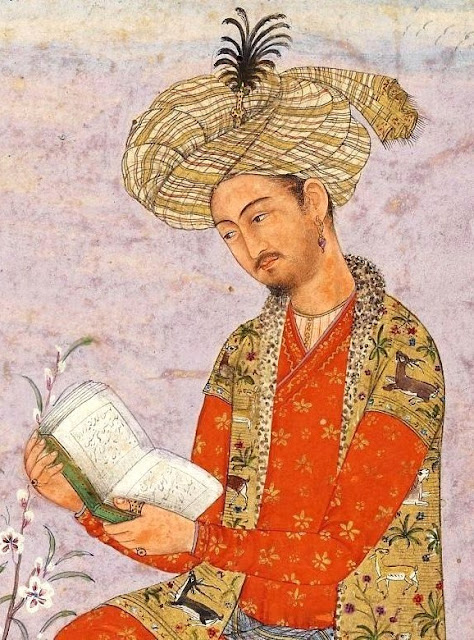Zahirudddin Muhammad babur was the founder of the Mughal Empire In Subcontinent
Zahiruddin Muhammad Babur established the Mughal Empire in India in the wake of crushing Ibrahim Lodhi in the Battle of Panipat in 1526.
At 14 years old, Babur rose the seat of the Central Asian realm of Farghana. His most noteworthy aspiration was to lead Samarkand. He took on numerous conflicts in the quest for this objective, winning and losing his realm commonly simultaneously. In 1504, he wandered into what is currently Afghanistan and vanquished Kabul.
His situation in Central Asia was tricky, best case scenario. So as to merge his standard, he attacked India multiple times, crossing the River Indus each time. The fifth undertaking brought about his experience with Ibrahim Lodhi in the main skirmish of Panipat in April 1526. Babur's military was preferable prepared over Lodhi's; he had firearms while the king depended on elephants. The best of Babur's developments was the presentation of black powder, which had never been utilized in the Sub-mainland. This joined with Babur's more up to date strategies gave him a more prominent bit of leeway. Babur's technique won the war and Ibrahim Lodhi passed on battling.
Panipat was simply the start of the Mughal rule. Akbar established its genuine framework in 1556. At the hour of the clash of Panipat, the political force in India was shared by the Afghans and the Rajputs. After Panipat, the Hindu sovereigns joined under Rana Sanga, the Raja of Mewar, bringing about a sizable power. Babur's military gave indications of frenzy at the size of the enormous contradicting armed force. To forestall his powers retreat, Babur attempted to impart trust in his troopers by breaking all his drinking cups and vessels, and promised never to drink again in the event that he won. His troopers cheered up, and when the armed forces met in the fight at Kanwaha, close to Agra on March 16, 1527, Babur had the option to win conclusively. Kanwaha affirmed and finished Babur's triumph at Panipat. Babur along these lines turned into the ruler of Central India.
In 1528, he caught Chanderi from the Rajput boss Medini Rao, and after a year he vanquished the Afghan bosses under Mahmud Lodhi in the clash of Ghagra at Bihar. These victories made Babur the "Ace of Hindustan". He was not bound to appreciate the products of his triumphs as he passed on instantly a while later in Agra on December 26, 1530. He was covered at Kabul as per his desire.
The Mughal age is celebrated for its many-faceted social turns of events. The Timurids had an extraordinary social custom behind them. Their genealogical realm at Samarkand was the gathering ground of the social conventions of Central and West Asia. The Mughals carried with them Muslim social conventions from Turko-Iranian territories, which motivated the development of the Indo-Muslim culture.
By story of the world







Post a Comment